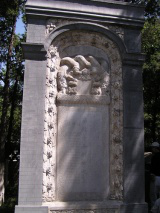Lord Alton writes from Matteo Ricci's Tomb in Beijing

Tomb of Matteo Ricci
Greetings from Beijing - the following is an extract from "Extract from Secret City: Matteo Ricci's Tomb"
Those over-confident about their old China hand credentials should visit the tomb of Matteo Ricci, who stands taller than most in the pantheon of China pioneers. Ricci, an Italian Jesuit priest who was born in 1552, is said to have been the first Westerner in China since Marco Polo three centuries earlier. His ambitious mission was to spread Catholicism throughout China, primarily by converting the Ming Emperor Wanli himself. Unfortunately for Ricci, it was Macau he landed at in 1582, a long way from the Forbidden City.
It would be 19 years until he finally made it to the capital, in which time he not only learned to 'get by' in the local language, but published the first six books of Euclid's Elements in Chinese. He also introduced Western ideas on subjects like geometry, astronomy and philosophy to the Middle Kingdom to wowed scholars and officials. He wasn't all marauding missionary though, and came to appreciate some Chinese values, eventually proposing a synthesis of Confucianism and Catholicism.
Yet despite gaining a widespread reputation as 'the Wise Man of the Great West,' Ricci didn't manage to meet the Emperor, let alone convert him. In the nine years until his death in Beijing aged 58, Ricci plied Wanli with extravagant gifts, including jewels and a clavichord - all to no avail. His mission wasn't a failure, though - by the time of his death, there were 300 Catholic churches in China.
And the Emperor did pay a final piece of respect to Ricci, allowing him a burial plot in Beijing, breaking the Ming Dynasty code that foreigners who died in China must be buried in Macau. Amazingly, Ricci's tomb has survived, in a slightly overgrown cemetery behind the Beijing Administrative College, where his Chinese name, Li Madou, adorns the headstone.
Matteo Ricci's Tomb , behind the French Church in the Beijing Administrative College, 6 Chegongzhuang Dajie, Xicheng district (tel 6800 7200). Open 8.30am-5pm daily.
Sent from my BlackBerry















